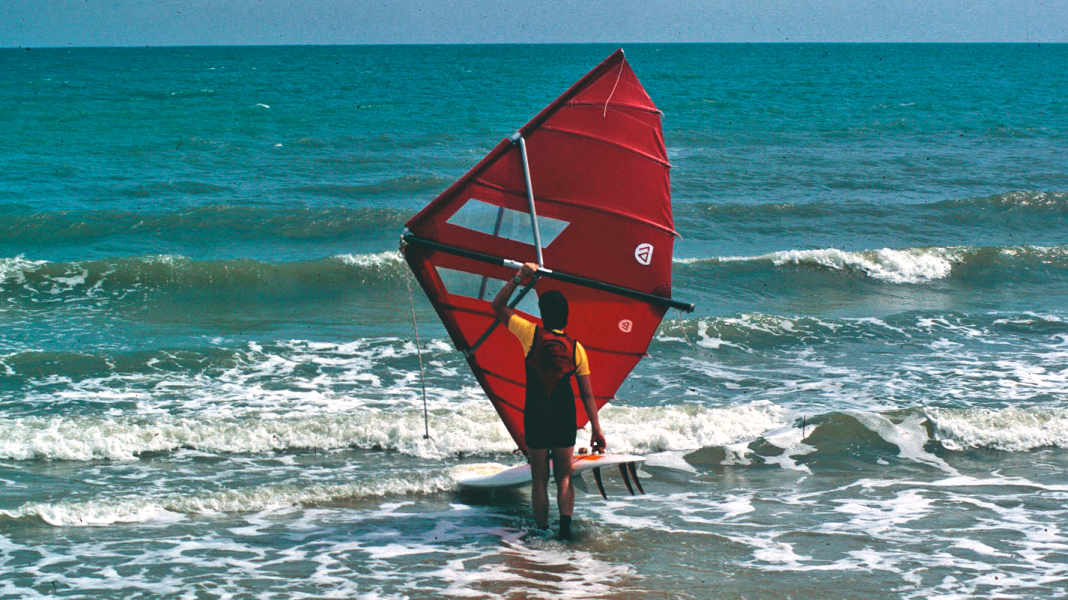
Wingsurfing is the latest trend on the water. But as is so often the case, in the long history of surfing, there were already guys a long time ago whose ideas were pretty revolutionary from today's perspective - and therefore clearly ahead of their time.
Uli Stanciu, the founder of the world's biggest windsurfing magazine "surf", was one of them. Now, 40 years later, he gives us an insight into the history of wingsurfing.
Uli: The idea for the first "Wing" rig came about in August 1981 when Jim Drake visited me at the surf editorial office in Munich. Jim and I had been friends since 1977, when surf magazine was founded and my article about the "true inventor" of windsurfing was published. So, over dinner in August 1981, we talked about the experiences we had made over a year earlier at the PanAm Cup in Hawaii - the development of fun boards, the first really high jumps over the waves. In the meantime, during our magazine tests on Gran Canaria, I had repeatedly observed flying fish that shot out of the water next to our boards and then often sailed many metres alongside us. I asked Jim if we could do something similar to the flying fish with our surfboards and described my observation that our normal windsurfing rigs are simply not symmetrical and after a jump you would tip to one side and fall into the water.
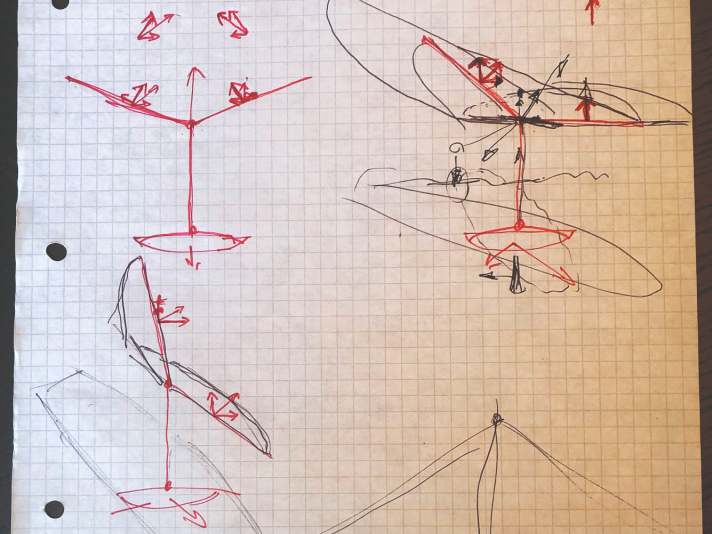
"What would it be like," I asked, "if our rigs were somehow symmetrical and you could fly a little when jumping like a flying fish?" I had no idea what something like that might look like, but Jim's eyes immediately flashed. He said, "I think I have the solution." As a gifted aeroplane designer and aero
As a gifted aerodynamics expert, he explained the principle of his wing design to me: the two wing halves must be the same size, slightly angled and have only one central outrigger. This is because the wing then automatically tilts to one side or the other when you turn the nose slightly out of the wind. To be honest, I didn't understand this straight away. We made a drawing on a piece of paper and Jim described the principle. I was thrilled. The very next day I built a small model from a piece of surfboard foam (Clark Foam), which I still have today.
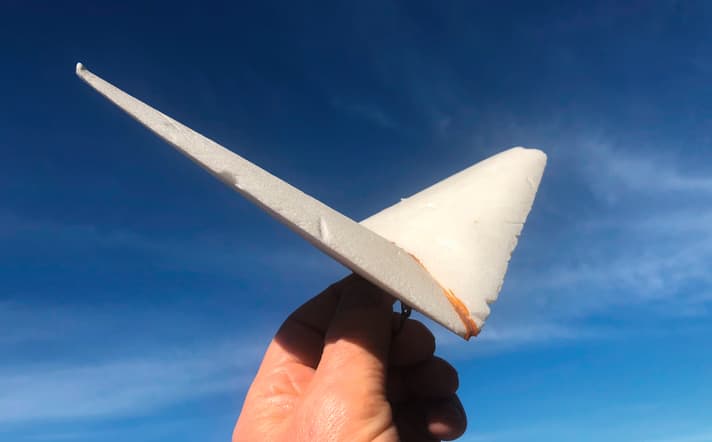
Then I held the model in front of a fan to test it. Lo and behold, it worked perfectly. As we really wanted to test the wing on a board and in the wind, I asked a few surfboard companies in Germany if they could build prototypes. In the end, I was accepted by Schütz Werke, which had just launched the "Fanatic" brand. Jim Drake and I met at the factory in October 1981, where Jim produced precise technical drawings of the "Wing" in the design department, which I still have today.
Then two rigs were built from aluminium tubes in the prototype department. At the same time I asked my friend, the sailmaker André Lefebvre (Bostalsee in Saarland), if he would tailor two sails for us. Jim also made him a cutting plan with exact measurements. André then made three sails, a yellow one for Jim, a dark red one for me and a green one for himself, which he later tried out on the Bostalsee with a support mast on the board.
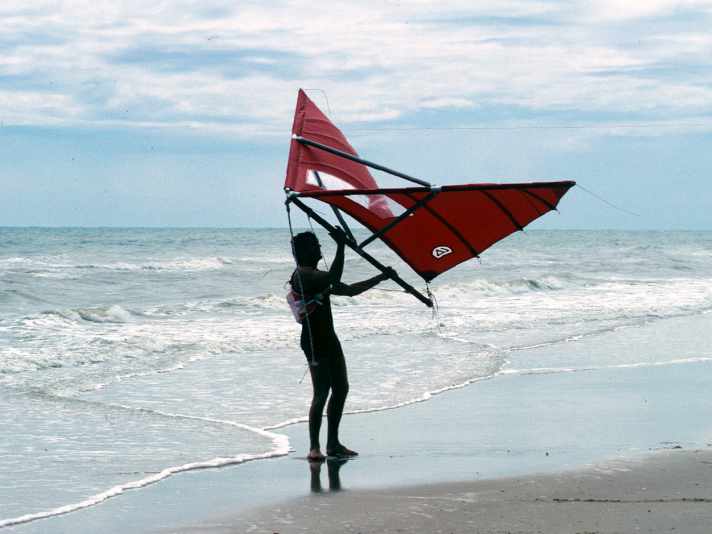
Jim Drake took a prototype and the yellow sail with him to California and later, at the end of January 1982, to the PanAm Cup in Kailua, where Pete Cabrinha, Richard Whyte and Randy Naish tried out the "Wing". I took my prototype with me to Thailand. It was 11 November 1981, so I was the very first person to try out the "Wing". Unfortunately, the conditions were not good - little wind and choppy waves. I tried to get through the small surf, the rig crashed into the water and the centre boom broke on the first attempt. I was pretty desperate, but I didn't give up.
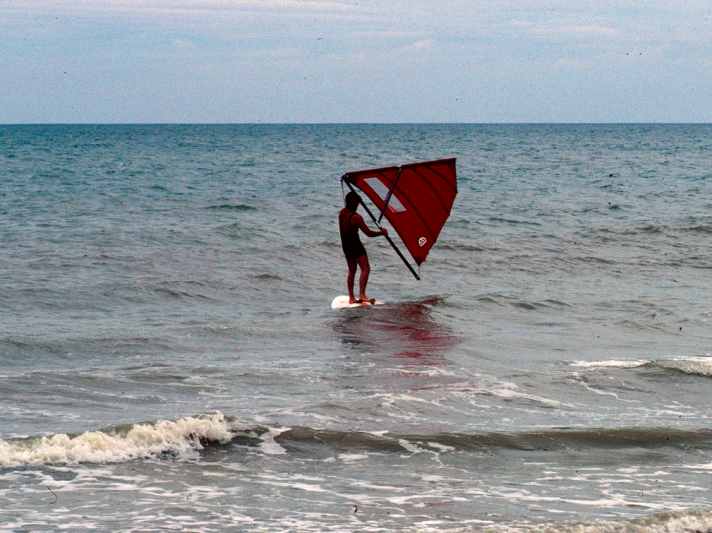
In the afternoon I took a mast from my windsurfing rig, sawed it to the right size and fitted it into the wing. The next day I went out again and had at least enough success to sail there and back a few times. This wing prototype with the dark red sail is still in my garage.
It is actually incomprehensible that it took another 40 years for wingsurfing to awaken from its slumber.
Tom Magruder's Wind Weapon is also certainly part of wingsurfing history. HERE here's the story.

